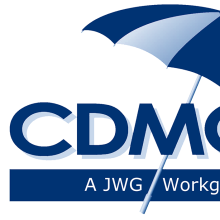On the 22nd January, over 30 stakeholders from 12 firms met Customer Data Management Group (CDMG) meeting to discuss their 2015 priorities for regulatory KYC requirements.
JWG presented a summary of 40+ new regulations that require firms to manage counterparty information over the next 3 years. Alec then presented summaries of the 11 regulations in scope for the meeting across trading, tax and AML. Regulations included in scope were SFTR, REMIT, APAC OTC regimes, EMIR, MiFID II/MiFIR, FATCA, GATCA, CDOT, AMLD IV, FinCEN CDD.
Following JWG‘s analysis of 40+ regulations and 500+ attributes and the challenges described (here). The group discussed the implementation timelines over the next 18 months and which of the operational challenges were likely too prove most painful for firms and their customers. The analysis showed that customer information would be required across many data types and according to an iterative timeline. The variety of definitions and collection methods meant that a lot of interpretation would be required across each requirement and that the iterative timeline meant that a holistic approach to implementation was difficult.
A survey issued by JWG assessed participants’ ability to source the information required by the regulations and the difficulty in creation of new standards. Key areas of concern identified by participants were the effort required to externally source ownership and personnel information and the client outreach required by operational data, such as tax documentation and trading relationship information. CDMG further identified ‘how to’ handbooks and reference implementation planning ‘roadmaps’ as priorities for managing the change.
The top KYC regulatory priority for the next three years were seen to be definitions, sourcing strategies and verification criteria for beneficial ownership information, and new data on staff. Key issues include:
- Beneficial ownership: What impact will the new FinCEN definition of beneficial owner (BO) and AMLD IV’s requirement to make owners public have?
- Role of identifiers: Can the LEI, or other identifiers (GIIN, etc.), help validate the accuracy of BO information and ensure reporting is consistent?
- Personnel identification: Dodd-Frank large trader reporting, and now MiFID II, require reporting on traders. How can this information be accurately collected and maintained?
Accordingly, our next Chatham house rule workshop will allow participants to discuss the challenges, set priorities and define a collaborative approach to overcoming them with your peers.
The next meeting on the 24 February is titled: Regulatory demands on ownership and personnel information
Email CDMG@jwg-it.eu if you are interested in attending.


